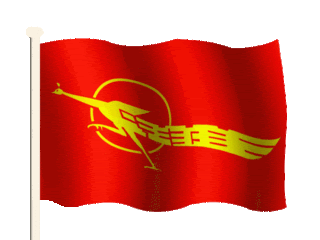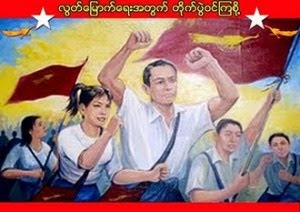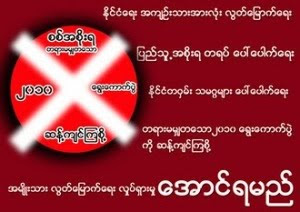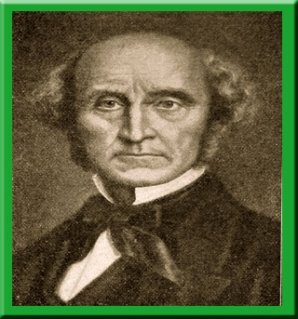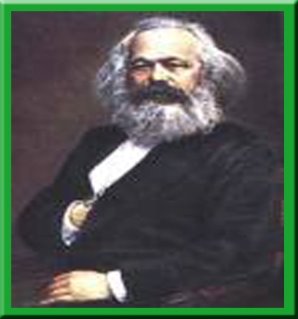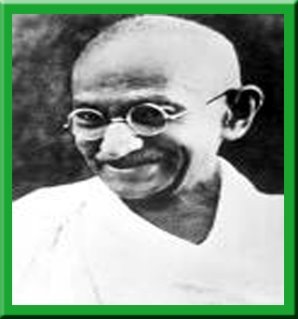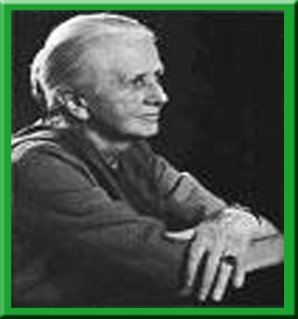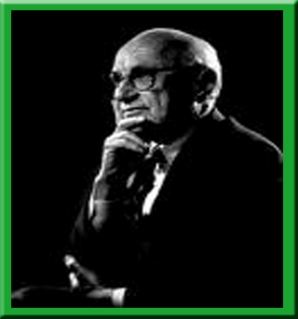As food is essential to maintain national security, most governments intervene in agricultural markets to attain a degree of self-sufficiency in food production, assure consumers an adequate supply of food at reasonable prices or counter interventions by foreign governments in agricultural markets by using a variety of policy instruments. Among the policy instruments, the common direct intervention measures such as tariffs and other import taxes, quotas on imports or exports and export subsidies or taxes are mainly used by governments. Regarding the European Union, it relies mainly on ad valorem tariffs to restrict imports of agricultural products. The EU insulates its domestic markets from changes in world prices and protects domestic prices established under the farm programs of the Common Agricultural Policy (CAP).
Common Agricultural Policy (CAP)
The Treaty of Rome in 1957 envisaged the creation of a "Common Market", including agriculture which was accorded 'special treatment'. The inclusion of agricultural products into a "common market" was considered to be a "sine qua non" condition for the success of the operation of the initial six Member States. Although the Treaty of Rome only deals with general aims and possible mechanisms to achieve those, the prominent role of agriculture being given in the Treaty underlines the importance of the sector to the member states (George, 1996).
The aims of the CAP, as laid down in the original Rome Treaty were to increase agricultural productivity by promoting technical progress, ensuring the rational development of agricultural production and the optimum utilization the factors of production, in particular labor; ensure a fair standard of living for those engaged in agriculture, by increasing their individual earnings; stabilize the (agricultural) markets and assure the availability of supplies and ensure reasonable prices fort he consumers (Article 39 of the Treaty of Rome).
Later, the Single European Act in 1986 introduced an additional general objective under the title The Environment (Title XW) and the Treaty on European Union (1992) recognized (Article B) economic and social cohesion as a general priority objective by developing this new objective in Title XIV (originally introduced in the Single European Act), obliging all sectoral policies (including agriculture), to take cohesion objectives into account.
All the rules constituting CAP are mainly based on the three fundamental principles governing the creation of the European Common Market such as
Market unity: there would be a single market rather than several separate national ones
Community preference: preference would be given to EU agricultural producers over non-EU producers and
Financial solidarity: the CAP would be paid for by the EU as a whole, rather than by national government expenditure.
Brown (2005) further identified the fourth principle that came to be adopted in practice, I.e. farm income would not be allowed to decline relative to that of other sectors (Brown, 2005).
To attain the objectives of CAP based on the above principles, several areas have been developed in specific areas of actions which include certain policy instruments. The specific areas of policy include agricultural markets which cover 95% of community agricultural products; structures which cover the medium and long-term structural problems; external aspects which cover the conclusion of trade negotiations and preferential agreements; and financing to fulfill the policy goals.
In the context of policy mechanisms, it was decided that the objectives of Article 39 were to be achieved by a Common Organization of Markets (COMs) based on a market prices support system or target price instrument, in which each COM assures a minimum price (support or intervention price) to the Community producers, thus this price acts as a "guarantee" to the producers that the market price of their product will not fall below this fixed minimum level. Other instruments of the CAP include intervention price instrument, which defines the price at which intervention agencies in member states buy up surplus stocks; entry price instrument, which sets up the minimum price for produce to be imported into the EU; variable levy mechanism, where duties were imposed to raise imports up to EU price and refund instrument, which rebates to EU exporters to lower EU export prices to world market levels. (Dinan, 1999)
Major changes and reforms of CAP
Theo Hitiris (2002) assessed the trends in EU agriculture under the key objectives of CAP and mentioned the three major defects to the CAP policies such as
The CAP led to excess production
The CAP's variable import levies and export subsidies insulated the EU markets from external price fluctuations, thereby amplifying the variability of world commodity prices
Depressed prices and price instability
Some problems and defects have become apparent early in the CAP's existence. Since 1970s, the criticism was directly against the policies in some issues as keeping prices above world prices, causing significant financial expenditures, leading to income redistribution from consumers to produces within and between countries and raising to collective protection of EU agriculture to such high levels that large surpluses of some important commodities were generated.
Under these mounting external and internal pressures, some radical reforms are introduced in CAP policy. The first attempt at reform was the Mansholt plan in 1968 that the twin objectives of stabilizing production at the level of demand while ensuring farmes a fair income could not be met. However, political opposition to the plan leads to the proposed reforms unacceptable.
The second attempt at reform was 'Guidelines for European Agriculture” Plan in 1981. But the measures in this plan cannot solve the fundamental problem of 'how to reconcile the social objectives of CAP with real market conditions'. The CAP problems are more worsened after Greece, Portugal and Spain joined as the members of the community as it increased the CAP budgetary expenditures and worsened the balance between supply and demand of agricultural products.
By the mid-1990s, European agriculture was faced by some pressures focused on the question of food safety. The prominent issues were cattle brain disease BSE (Bovine spongiform Encephalopathy) crises and GMOs (Genetically modified organisms). In the BSE crises, it was British Government which decided that British Beef was unsafe, thus EU made its own ban. However, once the British Government decided beef was again safe, it leads to the problem of conflict between member states and the EU commission with France maintaining its own national ban in contrast with EU decision to allow beef export.( Brown, 2005)
It was more complex in GM foods. The key decisions over G crops are whether governments would allow them to be released into the environment for field tests, whether commercial growing would be permitted and whether new foods containing GM products would be allowed to be sold in EU. The release of a GMO into the environment was covered by the EU's Deliberate Release Directive 90/220, set up in May of 1990. (Brown. 2005)
By 1991, the external pressure and the internal budget problems lead to the reform of CAP with the Macsharry Proposals. Dinan (1999) mentioned that the proposals called for three key reforms: the biggest price cuts in CAP history, direct monetary compensation to farmers who lost income due to these cuts and increased use of set-aside scheme. In 1992, the restructuring policy was undertaken and approved in December 1993 with the pressures of EU decision to complete single Market by 1992 and the GATT Uruguay Round for trade liberalization. The reforms aimed to slash overproduction by reducing the guaranteed prices by up to 30% and switching the CAP policy from price support to compensatory payments in terms of direct income supplements linked to farm size and average yields. The community agreed to change protection from variable levies to fixed tariffs. By using these reforms, the EU governments took a great step towards market liberalization of the agricultural sector by separating the economic form of the social functions of the CAP.
In 1999, a new agreement to reform CAP was signed and it introduced further direct payments and cuts in support prices by reducing them more than 50%. The Agenda 2000 reforms were agreed in March 1999 with the first pillar of facilitating the EU's negotiations in the WTO, easing the integration of eastern European countries into the EU, maintaining farming incomes y further direct payments to farmers, reinforcing the shift from price support to direct aid and the second pillar that focused on rural development, training, investment, diversification, agri-environmental schemes, food quality and animal welfare improvements.
Furthermore, the new inform took place in 2003 by directing at the main external challenges the EU faces related to budgetary, expenditures and inflation, The major reform was the decoupling of farm support from production by allowing the EU to place this aspect of the CAP into the WTO's green box of non trade-distorting measures which consists of agricultural support measures.
Conclusion
For several years, agriculture has been a key issue in EU in terms of political, economic, social and strategic reasons. It is more complicated than other sectors of the short-term, long-term demand and supply in the markets of both agricultural commodities and factors of production. In terms of government intervention, governments ought to intervene attempting to modify its course and to regulate its production and trade. If the economy is operating efficiently and the government intervenes in the agricultural sector to improve, the outcome would be a distorting welfare. For EU governance, agriculture is the main key sector for European governance not to produce a distorting welfare, thus it needed some necessary reforms for CAP along with EU enlargement.
Khin Ma Ma Myo (2006)
References
Brown, W. (2005) Food Fights: Europe and Agriculture, Milton Keynes, OU Press
Dinan, D. (1999) Ever Closer Union: An Introduction to European Integration, London, Macmillan
Hill, Brain E. (1987) The Common Agricultural Policy: Past, Present and Furture, Ed. Mathuen
European Commission Agenda 2000- Communication For a stronger and Wider Union (Doc/ 97/6/ 15.7.1997)
George, S. (1996) Policy and Politics in the European Union, Oxford, Oxford University Press
Treaty of Rome
Treaty on European Union
ဘေလာ့ လိပ္စာသစ္သို႕ ေျပာင္းေရႊ႕ျခင္း
(၂၀၀၇) ခုႏွစ္မွစ၍ ဘေလာ့စာမ်က္ႏွာအား ဖြင့္လွစ္ခဲ့ရာ ဖတ္ရွဳအားေပးၾကေသာ စာဖတ္ပရိသတ္အေပါင္းအား အထူးပင္ ေက်းဇူးတင္ရွိပါသည္။
ယခုအခါတြင္ ဘေလာ့ကို ဖြင့္ရန္ အခ်ိန္ၾကာျမင့္မွဳမ်ား ရွိေနေၾကာင္း၊ စာဖတ္သူအခ်ိဳ႕မွ အေၾကာင္းၾကားလာပါသျဖင့္ www.khinmamamyo.info တြင္ စာမ်က္ႏွာသစ္ကို ဖြင့္လွစ္ထားပါသည္။
စာမ်က္ႏွာသစ္တြင္ အခ်ိဳ႕ေသာ စစ္ေရး၊ ႏိုင္ငံေရး၊ စီးပြားေရး၊ ပညာေရး၊ က်န္းမာေရးဆိုင္ရာ ေဆာင္ပါးမ်ားႏွင့္ ရသစာစုမ်ား (ႏွစ္ရာေက်ာ္ခန္႕)ကိုလည္း က႑မ်ားခြဲ၍ ျပန္လည္ေဖာ္ျပထားပါသည္။
ယခုဘေလာ့စာမ်က္ႏွာကို ဆက္လက္ထားရွိထားမည္ျဖစ္ေသာ္လည္း ယေန႕မွစ၍ ပို႕စ္အသစ္မ်ား ထပ္မံ တင္ေတာ့မည္ မဟုတ္ပါေၾကာင္းႏွင့္ ပို႕စ္အသစ္မ်ားကို စာမ်က္ႏွာသစ္တြင္သာ တင္ေတာ့မည္ျဖစ္ပါေၾကာင္း ေလးစားစြာ အသိေပး အေၾကာင္းၾကားပါသည္။
စာမ်က္ႏွာသစ္သို႕ အလည္လာေရာက္ပါရန္ကိုလဲ လွိဳက္လွဲစြာ ဖိတ္ေခၚအပ္ပါသည္။
ေလးစားစြာျဖင့္
ခင္မမမ်ိဳး (၁၇၊ ၁၀၊ ၂၀၁၁)
www.khinmamamyo.info
ယခုအခါတြင္ ဘေလာ့ကို ဖြင့္ရန္ အခ်ိန္ၾကာျမင့္မွဳမ်ား ရွိေနေၾကာင္း၊ စာဖတ္သူအခ်ိဳ႕မွ အေၾကာင္းၾကားလာပါသျဖင့္ www.khinmamamyo.info တြင္ စာမ်က္ႏွာသစ္ကို ဖြင့္လွစ္ထားပါသည္။
စာမ်က္ႏွာသစ္တြင္ အခ်ိဳ႕ေသာ စစ္ေရး၊ ႏိုင္ငံေရး၊ စီးပြားေရး၊ ပညာေရး၊ က်န္းမာေရးဆိုင္ရာ ေဆာင္ပါးမ်ားႏွင့္ ရသစာစုမ်ား (ႏွစ္ရာေက်ာ္ခန္႕)ကိုလည္း က႑မ်ားခြဲ၍ ျပန္လည္ေဖာ္ျပထားပါသည္။
ယခုဘေလာ့စာမ်က္ႏွာကို ဆက္လက္ထားရွိထားမည္ျဖစ္ေသာ္လည္း ယေန႕မွစ၍ ပို႕စ္အသစ္မ်ား ထပ္မံ တင္ေတာ့မည္ မဟုတ္ပါေၾကာင္းႏွင့္ ပို႕စ္အသစ္မ်ားကို စာမ်က္ႏွာသစ္တြင္သာ တင္ေတာ့မည္ျဖစ္ပါေၾကာင္း ေလးစားစြာ အသိေပး အေၾကာင္းၾကားပါသည္။
စာမ်က္ႏွာသစ္သို႕ အလည္လာေရာက္ပါရန္ကိုလဲ လွိဳက္လွဲစြာ ဖိတ္ေခၚအပ္ပါသည္။
ေလးစားစြာျဖင့္
ခင္မမမ်ိဳး (၁၇၊ ၁၀၊ ၂၀၁၁)
www.khinmamamyo.info
Essay: Common Agricultural Policy and its reforms
Saturday, April 3, 2010
Posted by
Khin Ma Ma Myo
Labels:
အက္ေဆးမ်ား

